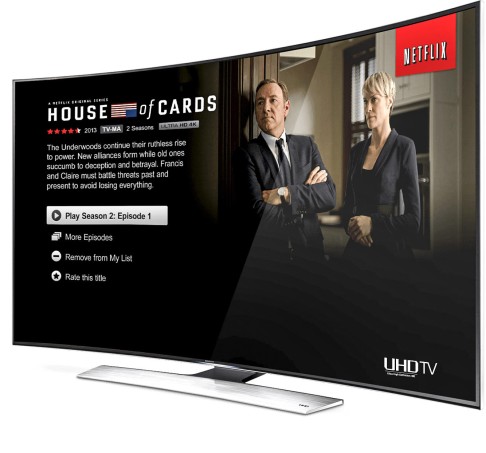Streaming is gaining ground, but optical discs aren't likely to disappear just yet
The cloud is everywhere, and conventional wisdom suggests that optical discs - the CD, the VCD, the DVD and even the Blu-ray disc - are being superseded by streaming to televisions, tablets and smartphones.

The figures back up the assumption that discs are in an inexorable decline, but the story isn't that simple.
"Physical media sales will continue to decline," says Michael Inouye, senior analyst at ABI Research, who predicts that the overall market for video on demand - including sales of DVD/Blu-ray discs - will have grown by 40 per cent by 2019.
"Despite this trend, physical media will continue to play a significant role for many consumers, particularly for those who have extensive DVD/Blu-ray libraries, purchase 4K TVs and want higher quality video than HD streaming services, or simply prefer having a copy in hand," says Inouye. "Traditional media still has plenty of resiliency left."
Even in homes where streaming is now the norm, discs have left a legacy. "Although streaming services allow consumers to watch films and TV shows on all kinds of devices wherever they want, the larger screens you usually find in a living room are still the most popular," says Jacinto Roca, CEO and co-founder of streaming service Wuaki.tv.
"Eighty per cent of content streamed from Wuaki.tv is through a smart TV … so while the optical disc may be on its way out, the legacy it leaves behind is a preference for living room-centric viewing. New and improved technologies, like Ultra HD 4k, are only going to increase this demand."
Offering images four times the detail of regular Blu-ray movies (about eight megapixels to Blu-ray's two megapixels), Ultra HD 4K televisions have been launched by all the major brands in the last year, and prices are dropping already. In a couple of years they'll constitute almost all TVs on sale.
There are a couple of problems: there's nothing to watch, and a full quality Ultra HD film is about 160GB in size. That's far too big to stream. With no 4K-capable Blu-ray discs yet available, manufacturers are worried that no one will buy their Ultra HD TVs. Sony has started selling digital players that contain several films in 4K resolution, but that's a stop-gap.
The only Ultra HD 4K title on streaming service Netflix is , which can be streamed to Sony's new FMP-X5 machines. It uses a new compression system, HEVC, that makes Ultra HD 4K streaming far easier, but less impressive. That won't stop other such services - such as Sony's own Video Unlimited service - following suit.
Bandwidth and data caps will remain a problem for most of the world's consumers, and if a "Blu-ray Ultra" disc looks unlikely, how can high quality content be shared between devices? SD cards could come to the rescue.
Predicated on the demand to share HD and 4k content between smartphones, tablets and TVs with or without an internet connection, SeeQVault, a tie-up between Panasonic, Samsung, Sony and Toshiba, relies on encrypted SD cards.
But a new generation of compatible gadgets is required, and so far, only a Toshiba SD card and a Sony camera are compatible with SeeQVault.
"It opens new possibilities for users interested in viewing HD content on any screen - from four inches to 4K," says Victor Matsuda, chief communications officer at SeeQVault's licensing company, NSM. "It is a critical element in completing the 'digital bridge' between current devices, 4K playback devices, Ultra HD TVs and the exploding mobile market."
Whether SeeQVault will catch on is anyone's guess, but with Ultra HD 4K smartphones on the way it seems that we're only a spike in Ultra HD TV sales away from a problem that only a physical format can easily solve.

